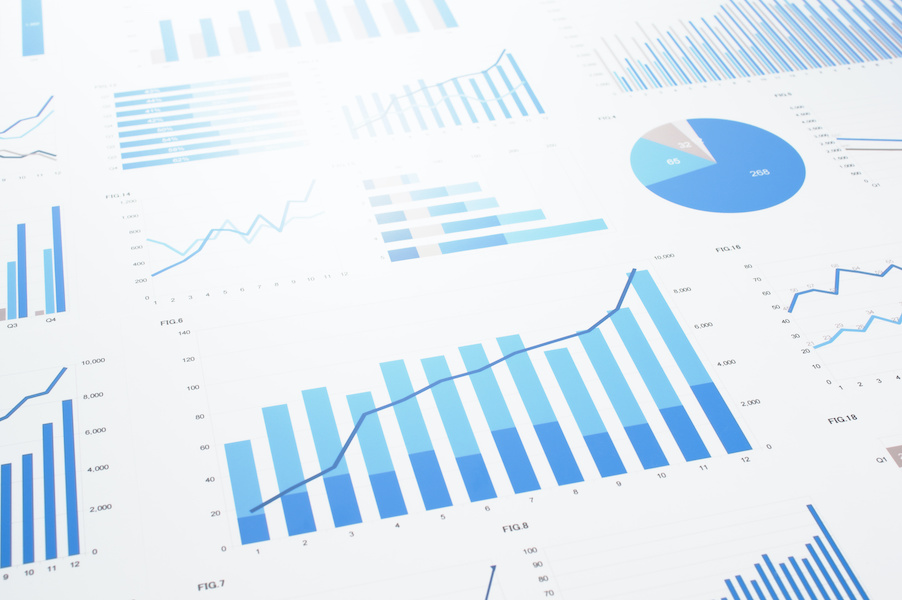Call Sales: +1 (833) 437-3835
Call Sales: +1 (833) 437-3835
Revel Systems | January 26, 2021 |

Restaurant forecasting can optimize your decision making in nearly all aspects of business operations. Whether you need an estimate of how much coffee to order next week or how to schedule your employees over the holidays, a restaurant sales forecast will help you make the best possible decisions.
A restaurant forecast is essential for keeping your business operations at an optimal level. But, how do you calculate restaurant sales before they happen?
The formula is very straightforward and it can be done by hand or by using data from a restaurant POS system. You don’t have to be a math wizard to produce the fundamental data that will help you grow your business. Basic math and logical assumptions are often enough to create useful sales forecast data.
The basic formula model is the following:
A(n*fm) + B(n*dm) = C
In the formula, A stands for the number of covers (which is the number of meals served multiplied by the anticipated average sales), B stands for the number of drinks multiplied by the expected average of sales, and C is the final projected sales forecast.
Conducting a restaurant sales forecast is essential for smart planning and decision-making. Using restaurant data analysis to optimize your business operations will help you control costs. It will also help you make better decisions regarding everyday expenses and operations, inventory and labor requirements and costs, and much more.
Accurate forecasts prevent over-ordering while also helping you make sure you meet inventory demand. They help prevent waste and spoilage, and they will help you always have your guest's favorites in stock.
When it comes to labor costs and requirements, a detailed forecast will help managers create proper employee schedules. It helps ensure correct staffing levels for the optimal guest experience at the lowest cost.
If you're still wondering how to forecast data and would like to go more into detail, we've prepared a step-by-step guide:
Start by calculating the baseline of your restaurant capacity. It is the estimated daily sales number that will help you create your full forecast.
Not every restaurant operates for the same number of hours, and not everyone has the same number of visitors at every time of the day. Count the number of tables and the number of seats at every table, estimate how many different customers can turn at a single table during working hours, and do the same for each table.
Not every guest will have a beverage with their meal, so to create an accurate forecast, you should account for drinks separately. Also, don’t forget to put coffee into the calculations, especially if you have guests coming over just for a cup of coffee outside the lunch/dinner period.
When you have all the estimated data, it's time to turn your daily forecast into a monthly forecast. After adjusting expectations and estimates for each month, you can conduct your yearly restaurant forecast.
Your POS data is the most valuable tool you can have for optimizing staff, operations, inventory, and stock levels. Knowing your estimated sales will help you make the right decisions about inventory and purchasing. The data you get from your estimates will help with under-ordering, inventory shortage, over-ordering, and many other problems that lead to dissatisfied customers. If you know the exact data about last Friday's sales, you can estimate how the upcoming Friday may go.
Sophisticated enterprise POS systems provide insight into customer behavior and precise data you can use to grow your business and upgrade your operations.
Let's say you own a restaurant that has 15 tables for four. Ideally, on a busy evening, all 15 tables will be full of four people sitting at each. During dinner hours, a single table can take two turns of guests. With these estimates, you can expect that the kitchen will be serving 120 main courses per evening.
If your average per-person price is $20, your estimated sales forecast will go like this:
Number of tables (15) x Guests per table (4) x per-person price ($20) x Table turns per evening (2) = $2400.
As you can see, your restaurant sales forecast on a busy evening with our imagined restaurant is $2400. However, to get more precise data, you must also consider quiet evenings, as well.
Our innovative iPad POS system allows you to gather past and real-time data and use it to create an accurate sales forecast. Whether you need to estimate your sales for the next month, quarter, or year, the detailed data our systems keep will help you conduct a useful forecast. Contact us to get a free demo.